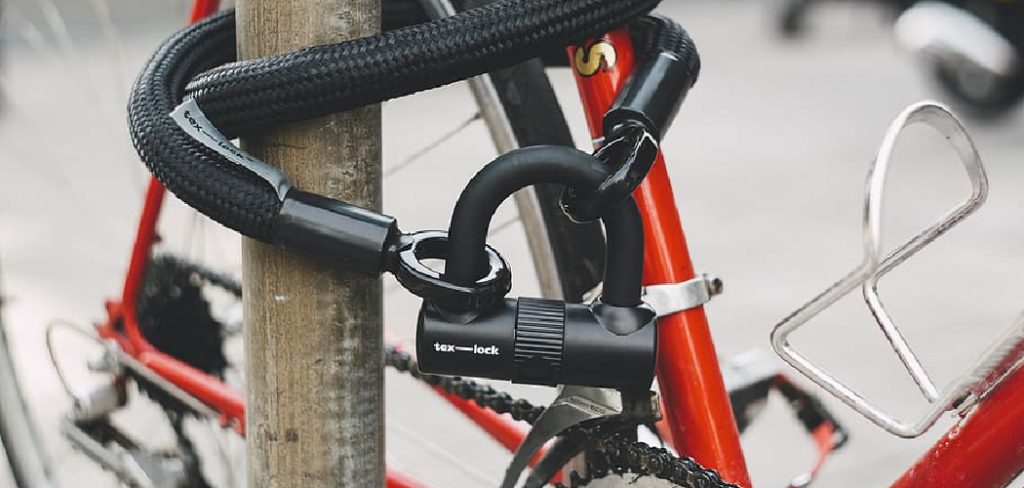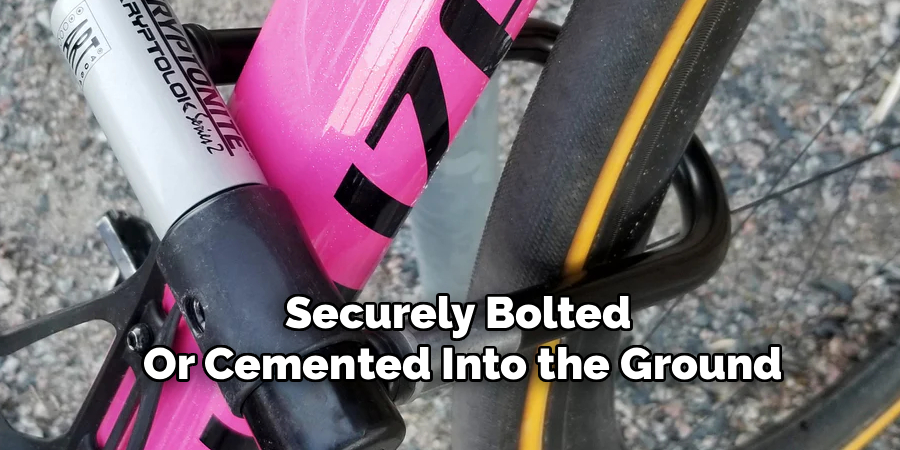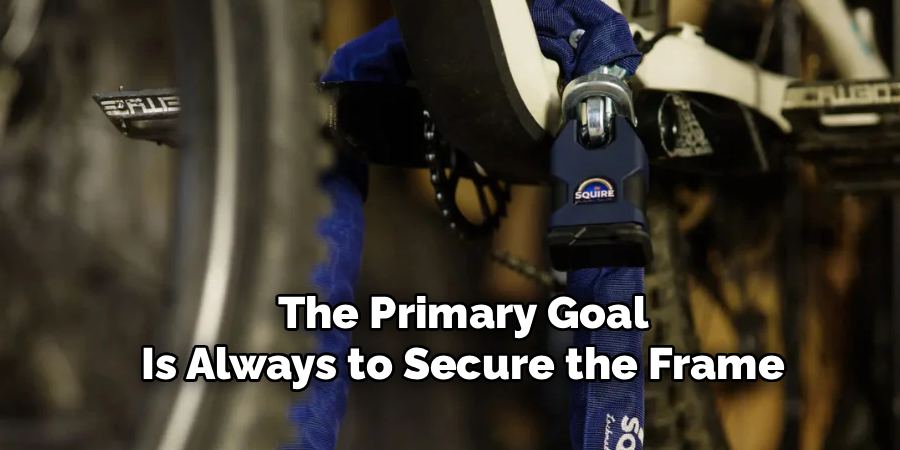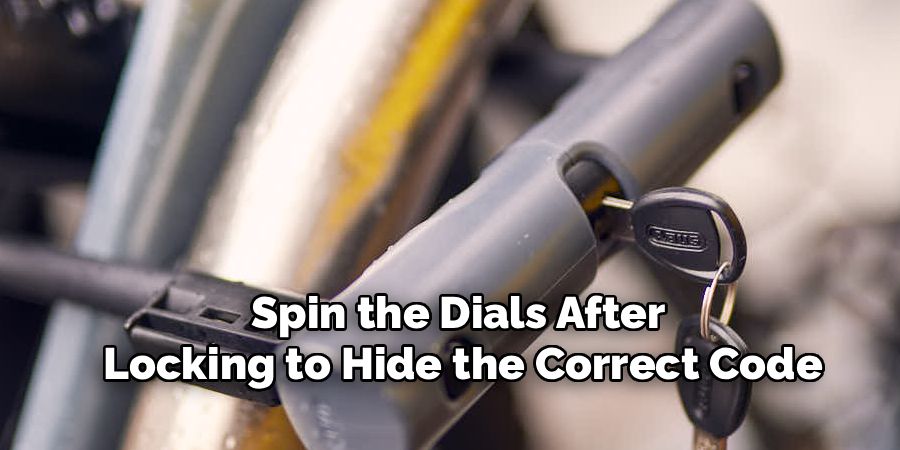Your bicycle is more than just two wheels and a frame; it’s your freedom, your exercise partner, and your mode of transportation.
Whether you’ve invested in a high-end road bike or a trusty commuter, the thought of it being stolen is heartbreaking. This is where a reliable locking system becomes essential. While heavy-duty U-locks get a lot of attention, the humble bike lock cable offers a unique blend of flexibility and security that makes it an indispensable tool for any cyclist. Understanding how to use one correctly can be the difference between a quick stop and a long walk home.
This guide on how to use bike lock cable will walk you through everything you need to know about using a bike lock cable effectively. We’ll cover the benefits, the necessary tools, and provide a detailed step-by-step process to ensure your bike stays right where you left it.

What Will You Need?
To properly secure your bike with a cable, you only need a few key items. Having the right gear makes the process quick and effective.
- A Quality Bike Lock Cable: This is the most crucial component. Choose a cable that is thick, preferably made from braided steel, and long enough to secure your frame and at least one wheel.
- A Strong Primary Lock (Recommended): For maximum security, it’s best to use a cable in conjunction with a U-lock or a heavy-duty chain lock. The U-lock secures the frame to the anchor, while the cable secures the wheels and other accessories.
- A Secure Anchor Point: This is the immovable object you will lock your bike to. Look for bike racks, solid metal railings, or firmly planted poles.
10 Easy Steps on How to Use Bike Lock Cable
Securing your bike properly involves more than just looping a cable through the frame. Following these steps will maximize your bike’s safety and give you peace of mind.
Step 1: Choose the Right Location
Before you even take out your lock, scout for a good spot. The ideal location is well-lit and has high foot traffic, as thieves prefer to work in secluded, dark areas where they won’t be seen. If possible, find a spot within view of security cameras. Public bike racks are usually the best option, as they are designed for this purpose. Avoid locking your bike to objects that can be easily dismantled or cut, such as small trees, chain-link fences, or wooden railings. Check that the object you choose is securely bolted or cemented into the ground. A thief can simply lift your bike over a short pole, so ensure the anchor is tall enough to prevent this.

Step 2: Assess Your Anchor Point
Once you’ve found a good location, take a closer look at your chosen anchor point. Is it solid? Give it a good shake to ensure it’s firmly rooted. Look for signs of tampering or weakness. Avoid signposts with easily removable signs, as thieves can unscrew the sign, lift your bike over the top, and be on their way. The best anchor points are single, continuous loops of thick metal, like a dedicated bike rack, or very tall, sturdy poles. The anchor should be strong enough that a thief can’t break it to free your bike.
Step 3: Position Your Bike Correctly
How you position your bike against the anchor point matters. Place your bike as close as possible to the object you’re locking it to. The goal is to leave very little space between the bike, the lock, and the anchor. A snug fit makes it much more difficult for a thief to insert tools like a pry bar or a jack to break the lock. If you are using a U-lock in combination with your cable, position the bike so the frame’s main triangle is right next to the anchor point, as this is the most valuable part of your bicycle.
Step 4: Identify the Most Valuable Parts
A bicycle is a sum of its parts, and some are more valuable or easier to steal than others. The frame is the most expensive component, followed by the wheels (especially the rear wheel, which is connected to the drivetrain). Your saddle and seat post can also be quick targets for thieves. Your strategy should be to secure as many of these valuable parts as possible. The primary goal is always to secure the frame. After that, focus on the front and rear wheels. A cable lock is especially useful for this task due to its length.

Step 5: Thread the Cable Through the Frame
Always start by securing the frame. This is the absolute minimum you should do. Thread the cable through the main triangle of your bike’s frame. The main triangle is formed by the top tube, down tube, and seat tube. Do not lock your bike by the top tube alone, as some frames can be separated, and do not lock it by a wheel alone, as a thief can simply remove the wheel and walk away with the rest of your bike. The cable must pass through the closed triangle of the frame.
Step 6: Secure the Rear Wheel
The rear wheel is often more valuable than the front wheel because it is attached to the cassette and derailleur. Whenever possible, your locking strategy should include the rear wheel. After threading the cable through the frame, continue to loop it through the spokes of the rear wheel. Be careful not to loop it around the tire only, as a deflated tire could create enough slack for the wheel to be removed. The cable should go through the rear triangle of the frame and the wheel itself.
Step 7: Secure the Front Wheel
With the frame and rear wheel accounted for, the next target is the front wheel. Many front wheels have quick-release levers, making them incredibly easy for thieves to steal in seconds. If your cable is long enough, loop it through the front wheel after securing the frame and rear wheel. If you are using a U-lock on the frame and rear wheel, a cable is the perfect tool for securing the front wheel to the frame or the anchor point. This double-locking method provides comprehensive protection.
Step 8: Loop the Cable Around the Anchor
Now that the cable is threaded through your bike’s most important parts, it’s time to attach it to your chosen anchor point. Pull the cable taut and loop it securely around the sturdy object you selected earlier. Make sure the cable is wrapped tightly with as little slack as possible. Excess slack gives a thief more room to work with tools and apply leverage to cut the cable or break the lock. A tight, well-positioned lock is a much harder target.
Step 9: Engage the Locking Mechanism
This is the final and most crucial step in the physical process. If your cable has loops on both ends (designed to be used with a U-lock), thread one end through the other and secure the final loop to your U-lock. If you are using an integrated cable lock with its own key or combination system, bring the ends together and click the lock into place. For combination locks, spin the dials after locking to hide the correct code. For key locks, give the lock a firm tug to ensure it is fully engaged before removing the key.

Step 10: Double-Check Everything
Before you walk away, take a final moment to review your work. Is the bike secure? Give it a gentle push and pull to ensure there’s no significant wiggle room. Is the anchor point solid? Is the lock properly engaged? Are the most valuable parts of your bike—the frame and at least one wheel—secured? This final check can help you spot any mistakes you might have made in your haste and give you the confidence that your bike is as safe as it can be.
5 Things You Should Avoid
- Locking Only a Wheel: Never secure your bike by just a wheel. A thief can remove the wheel in seconds and walk off with the rest of your bike.
- Using Flimsy Anchor Points: Avoid locking your bike to small trees, chain-link fences, or anything that can be easily cut or dismantled.
- Leaving Too Much Slack: A loose, dangling cable is an invitation for thieves. It gives them space to use bolt cutters or other tools. Keep the cable as taut as possible.
- Parking in a Secluded Area: Thieves love privacy. Always choose a well-lit, high-traffic area to park your bike.
- Relying on a Cable Alone for High-Crime Areas: While great for secondary security, a cable lock by itself may not be sufficient in areas known for bike theft. Combine it with a U-lock for maximum protection.

Conclusion
A bike lock cable is a versatile, lightweight, and user-friendly tool that plays a vital role in keeping your bicycle safe.
By choosing a quality cable and following the proper locking techniques—securing the frame and wheels to a solid anchor point— you significantly reduce the risk of theft. While no lock is completely foolproof, using a cable smartly, especially in combination with a strong U-lock, creates a formidable defense that will encourage most thieves to move on to an easier target.
Hopefully, the article on how to use bike lock cable effectively has provided valuable insights and tips on how to keep your bicycle safe.
About
Safety Fic is a distinguished figure in the world of Diy design, with a decade of expertise creating innovative and sustainable Diy solutions. His professional focus lies in merging traditional craftsmanship with modern manufacturing techniques, fostering designs that are both practical and environmentally conscious. As the author of diy, Safety Fic delves into the art and science of Safety Fic-making, inspiring artisans and industry professionals alike.
Education RMIT University
(Melbourne, Australia) Associate Degree in Design (Safety Fic) Focus on sustainable design, industry-driven projects, and practical craftsmanship. Gained hands-on experience with traditional and digital manufacturing tools, such as CAD and CNC software.
Nottingham Trent University
(United Kingdom) Bachelor’s in diyfastly.com and Product Design (Honors) Specialized in product design with a focus on blending creativity with production techniques. Participated in industry projects, working with companies like John Lewis and Vitsoe to gain real-world insights.
Publications and Impact
In diy, Safety Fic his insights on indoor design processes, materials, and strategies for efficient production. His writing bridges the gap between artisan knowledge and modern industry needs, making it a must-read for both budding designers and seasoned professionals.
